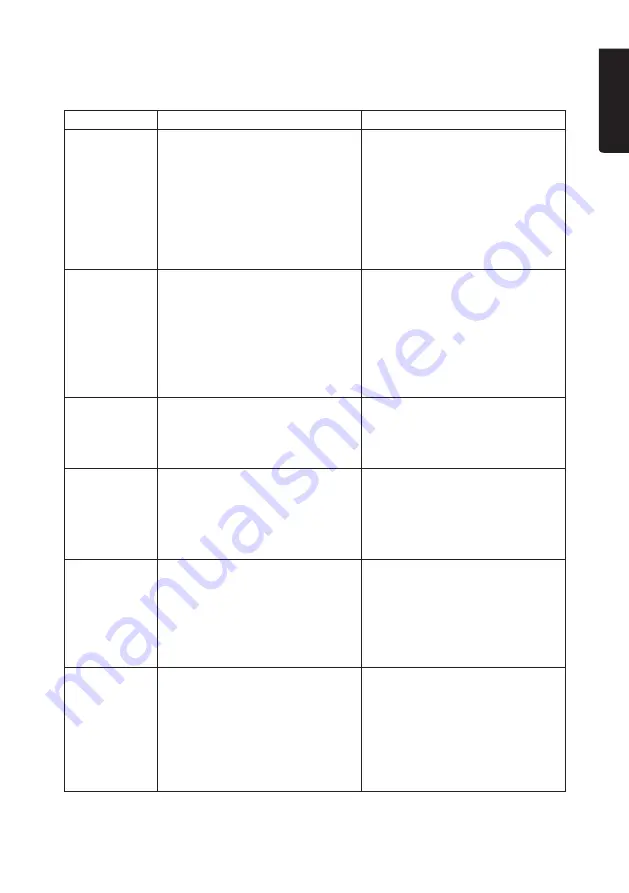
EN
G
LI
S
H
13
Troubleshooting guide
Problem
Cause
Correction
The spray
gun does
not start.
1. The mains lead is not plugged
into the wall socket properly.
2. The mains lead or plug is
damaged.
3. The wall socket has no
power.
1. Check the connection.
2. Replace the mains lead if
necessary.
3. Check all the fuses/circuit
breakers in the circuit.
Contact a qualified electrician
if you are at all unsure about
how to proceed.
No paint
comes out of
the nozzle.
1. The nozzle or pickup tube
is clogged.
2. The pickup tube is loose.
3. The container is not screwed
on tight.
4. The paint is too viscous
(too thick).
1. Clean the parts with solvent
or water depending on
the type of paint used.
2. Unscrew the container and
secure the pickup tube.
3. Tighten the container.
4. Dilute the paint by another 10%.
The paint
drips from
the nozzle.
1. Too much paint has built
up on the paint nozzle and
air cap.
2. The lock nut is loose.
1. Clean the parts with solvent or
water depending on the type
of paint used.
2. Tighten the retaining ring.
The spray jet
pulsates.
1. The paint container is
nearly empty.
2. The air filter is clogged.
3. The paint is too viscous
(too thick).
1. Refill the container.
2. Clean or replace the air filter.
3. Dilute the paint by another 10%.
Runs in
the paint on
the surface.
1. Too much paint leaving
spray gun.
2. Paint not viscous enough
(too thin).
3. Spray gun too close or moved
too slowly over surface.
1. Reduce the paint volume
using the regulator (7).
2. Check the thickness of
coating material.
3. Refer to the
Operating
instructions
section above.
The paint
does not
cover
the surface.
1. Too little paint leaving
the spray gun.
2. The paint is too viscous
(too thick).
3. Spray gun too far away
from or moved too quickly
over surface.
1. Increase the paint volume
using the regulator (7).
2. Check the thickness of
coating material.
3. Refer to the
Operating
instructions
section above.














































